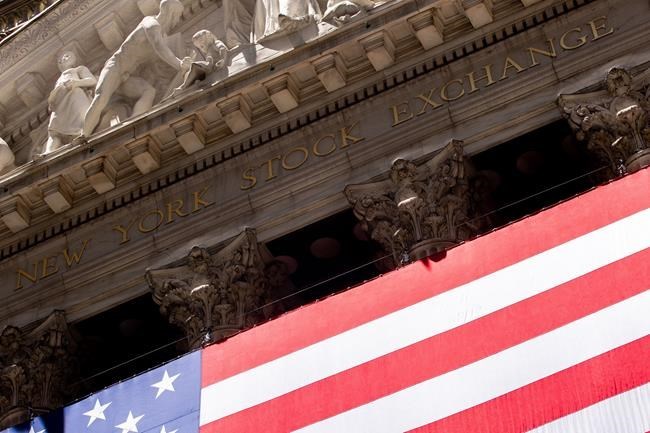NEW YORK ÔÇö Stocks fell again on Wall Street Thursday, closing out the worst quarter for the market since the onset of the pandemic in early 2020. The S&P 500 index lost 0.9%. ItÔÇÖs now down 21% since hitting a record high at the beginning of the year, having entered a bear market earlier in June. The Dow Jones Industrial Average fell 0.8% and the Nasdaq fell 1.3%. Tech stocks and retailers and other companies that rely directly on consumer spending posted some of the biggest losses, as they have all year. The yield on the 10-year Treasury note fell to 3.01%.
THIS IS A BREAKING NEWS UPDATE. APÔÇÖs earlier story follows below.
Stocks fell on Wall Street in afternoon trading Thursday, on pace to end the market's worst quarter since the early days of the pandemic.
The S&P 500 fell 0.5% as of 2:37 p.m. Eastern, though it was down as much as 2.1% earlier in trading. The benchmark index has been on a dismal streak that dragged it into earlier this month and is now down 20% for the year. The second quarter is on track to be its worst since the beginning of 2020.
The Dow Jones Industrial Average fell 204 points, or 0.7%, to 30,824 and the Nasdaq fell 0.9%. Small company stocks also fell. The Russell 2000 lost 0.4%.
The yield on the 10-year Treasury, which fell to 2.98% from 3.09% late Wednesday.
Technology companies were among the biggest weights on the market, as investors continued to favor utilities and other traditional defensive stocks. Apple fell 1.9%, while Exelon rose 2.7%.
Retailers and other companies that rely directly on consumer spending also posted some of the biggest losses, as they have all year. Amazon slipped 1.9% and Best Buy shed 2.1%.
Rising inflation has been behind much of the slump for the broader market this year as businesses raise prices on everything from food to clothing and consumers are squeezed tighter. Inflation remains stubbornly hot, according to a series of recent economic updates. The Federal Reserve and other to try and slow economic growth in order to cool inflation.
ÔÇ£What the market is trying to asses is when does it seem as if the Fed is going to have what it needs to ascertain that inflation is plateauing,ÔÇØ said Quincy Krosby, chief equity strategist for LPL Financial.
A measure of inflation that is closely tracked by the Fed from a year earlier, unchanged from its level in April. ThursdayÔÇÖs report from the Commerce Department also said that consumer spending rose at a sluggish 0.2% rate from April to May.
The update follows a worrisome report earlier this week showing that . The government has also reported that the and weak consumer spending was a key part of that contraction.
Investors are worried that as inflation hurts businesses and consumers. A key concern involves the Fed's interest rate hikes, which could slam the brakes on economic growth too much and actually bring on a recession.
The situation has become even more complicated following added supply chain problems because of and . The war in Ukraine prompted a surge in oil prices this year that resulted in . The and allied producing nations decided Thursday to increase production of crude oil, but the amount will likely do little to relieve high gasoline prices at the pump and energy-fueled inflation plaguing the global economy.
ÔÇ£ThereÔÇÖs no doubt this has been a difficult two quarters for the market, the U.S. economy, the U.S. consumer, and for the FedÔÇÖs job to control and curtail inflationary pressure,ÔÇØ Krosby said. ÔÇ£And yet, as we get into the beginning of the second half, so far companies have been managing and it's the guidance they offer that is going to help set the tone over the next couple of weeks.ÔÇØ
Damian J. Troise And Alex Veiga, The Associated Press


